Cane Toad Controversy: Is 'Toadzilla' a Record-Breaker?
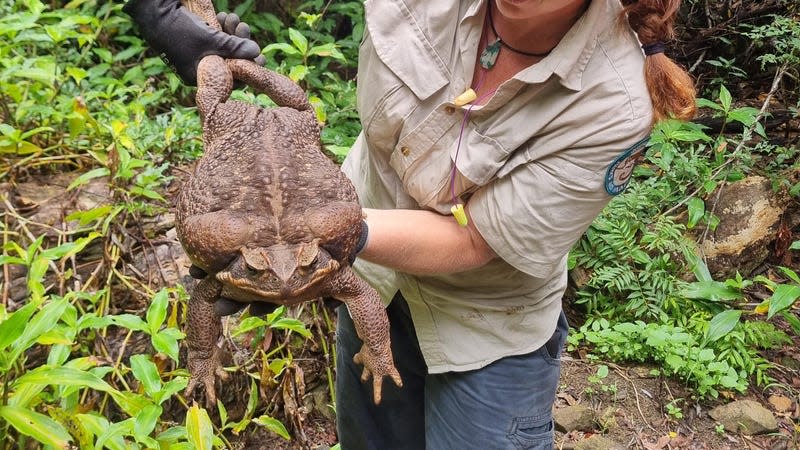
When Kylee Gray first laid eyes on the creature, she couldn’t help it: She gasped aloud. Then, the Australian park ranger picked up the cane toad and the surprises kept coming. Gray simply “couldn’t believe how big and heavy it was.” And she was right to be shocked.
Cane toads, mottled brown amphibians—considered highly invasive in Australia, Florida, and elsewhere—usually weigh around 3 pounds as adults. But the specimen Gray scooped up clocked in at 5.95 pounds (2.7 kg). Fittingly, “we dubbed it Toadzilla,” the ranger said in a Friday news statement. But the toad had lost weight by a later weigh-in, and its place in the record books is uncertain.
Read more
Click through to see more pics of this honkin’ amphibian and to learn more about the brewing controversy.
Thunder Thighs
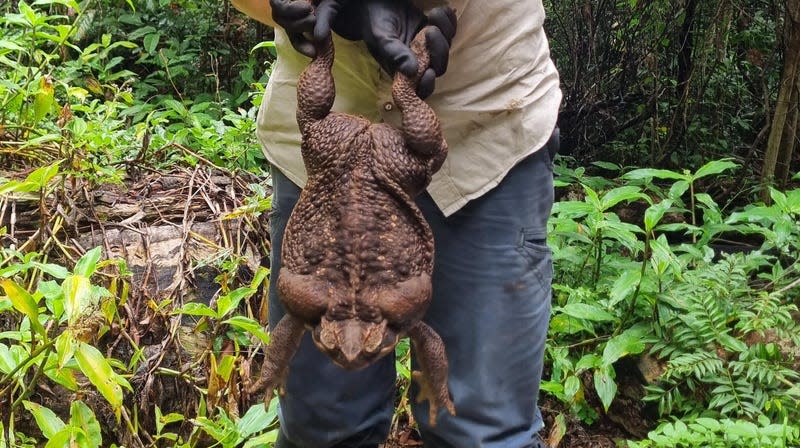
Toadzilla was found on the edge of a forest inside Conway National Park, after a snake on the road forced a group of park rangers to stop their vehicle.
The (presumed female) behemoth potentially breaks the existing world record for the largest known toad, set by a Swedish pet named Prinsen (The Prince). Since 1991, Prinsen has held the title, with a documented weight of 5.84 pounds (2.65 kg), and a length of 1 foot 3 inches “from snout to vent.” But thanks to Toadzilla, The Prince may be dethroned—in our hearts, if not in the official Guinness Book.
Conway National Park rangers were awed by the potentially record-breaking size of Toadzilla.
How to Weigh a Toad
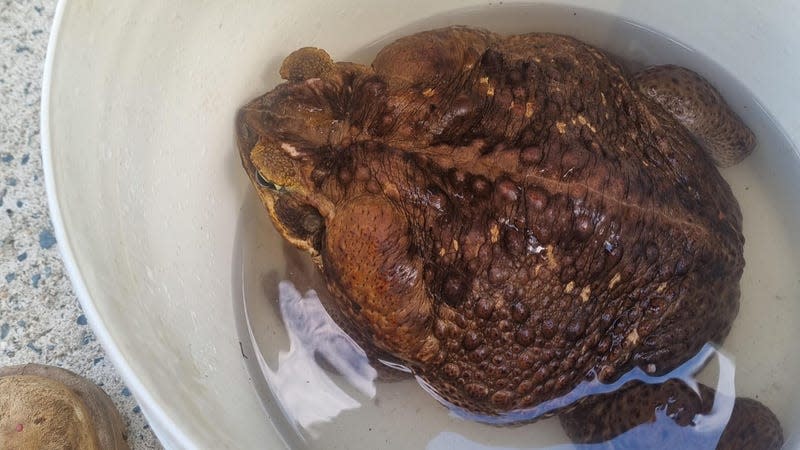
To establish Toadzilla’s new place atop the amphibian hefty hierarchy, the rangers first weighed it in the field. And upon initial capture, that measurement was 2.7 kg, a Queensland Department of Environment and Science press officer told Gizmodo in a phone call.
But on a follow-up weigh-in, after the toad had been kept in captivity for a period of time, the press officer noted that the animal had lost some weight and was down a significant amount. So, establishing the specimen as an official record-holder could be challenging, if not altogether impossible.
Toadzilla’s Weigh-In
The weigh-in captured on video unfortunately didn’t seem to capture Toadzilla’s true grandeur and girth.
A video taken of the toad being measured via hanging scale shows that the combined weight of Toadzilla + bucket was 5.05 kg at the time and that the bucket alone weighed 2.7 kg—which would leave Toadzilla at a less impressive 2.35 kg.
However, the rangers and Queensland press officer insisted that the initial, undocumented 2.7 kg was the true value. And who are we at Gizmodo to question the new queen?
Matt Watson, a media officer with the Queensland Department of Environment and Science, wrote to Gizmodo in an email: “I believe it was four days between the initial 2.7kg weigh in and the recorded video. I’m not sure on the world record process, but it would’ve been great to get a photo of the initial weigh-in.”
All About Cane Toads
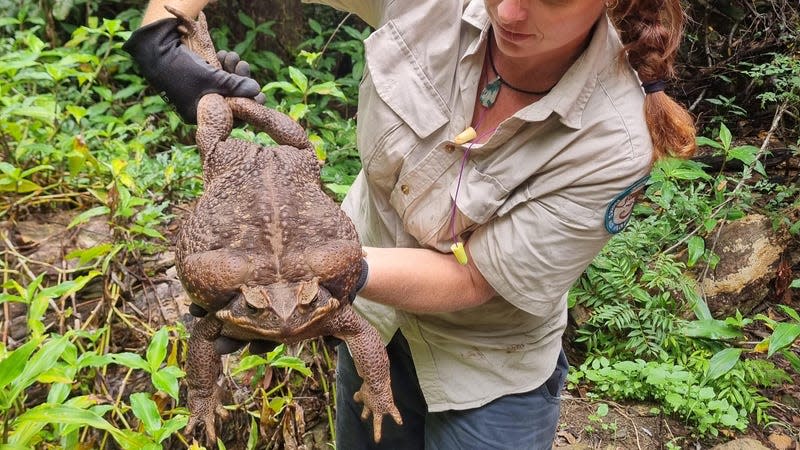
Regardless of Toadzilla’s exact weight, we can all agree: She is BIG. Which makes sense, because cane toads are the largest known toad species.
They’re native to South and Central America, where they inhabit sand dunes, coastal grasslands, and forest margins. Individuals can live up to 15 years in the wild, females grow larger than males, and the species is highly poisonous—oozing a milky mix of toxins from warty glands. They’re generalist predators, eating everything from insects to small birds, mammals, and other amphibians.
In Contrast: The Smallest
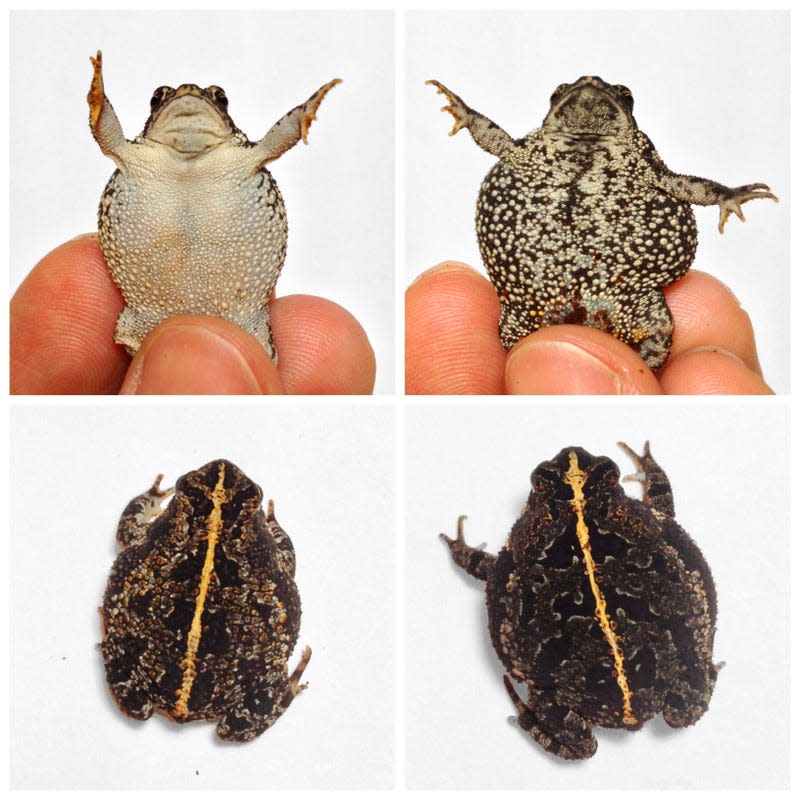
Adult oak toads frequently measure less than an inch.
To get a sense of the range of sizes toads can be, compare Toadzilla’s proportions with that of the tiniest North American toad species: the oak toad. Oak toads average about 0.75 to 1.3 inches long as adults and are found in the Southeastern U.S..
The world’s smallest toad species, according to the Guinness Book, is a subspecies of the Beira pygmy toad. The largest individual ever measured of that species came in at less than an inch.
Invasive and Destructive
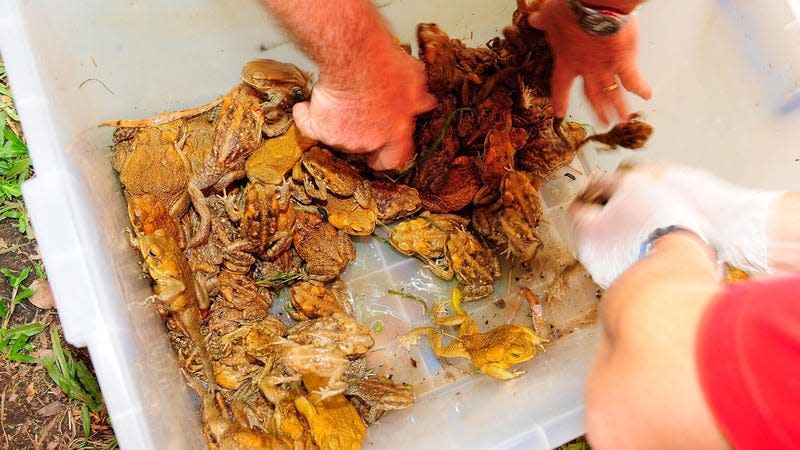
But back to the big boys.
Because of their poisonous nature and adaptable palate, cane toads are considered one of the worst invasive species on Earth. And unfortunately for Toadzilla, the specimen was found in coastal Queensland, not the Amazon basin. In accordance with Australian law, the humongous hopper was promptly removed from the wild and humanely euthanized.
Australian History
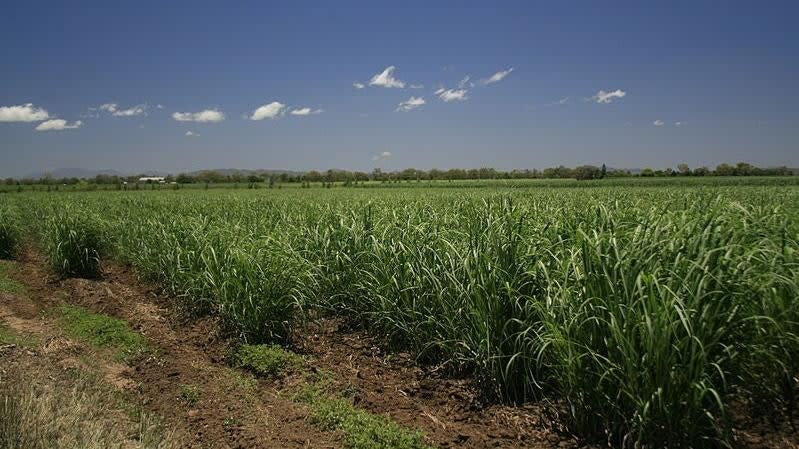
Cane toads were introduced to Australia in 1935, on purpose, in an effort to control an insect pest. Beetle larvae were destroying sugar cane crops, and the idea was that the voracious amphibians would solve the issue. However, since those first 2,400 amphibians were let loose in the agricultural fields of north Queensland, the nationwide population has ballooned to an estimated 200 million+.
The Casualties of Cane Toads
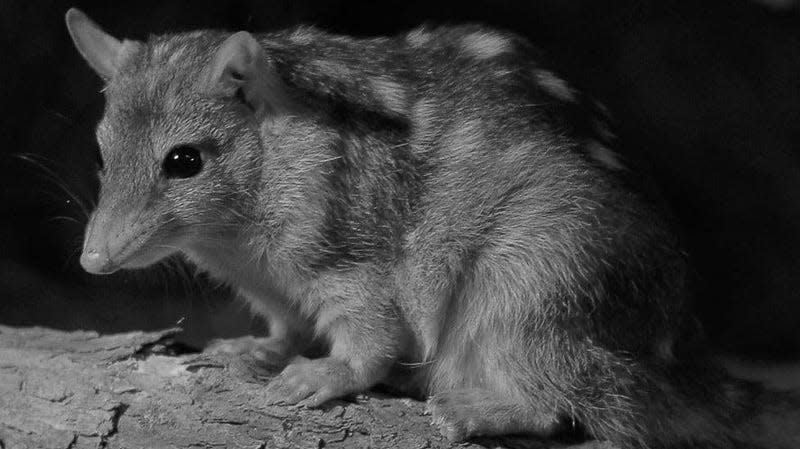
Sadly, the species has been responsible for the decline and local extinction of multiple native species (like the very cute and fuzzy northern quoll)—owing to the fact that almost nothing can safely eat it, while it can eat basically everything.
That latter statement is particularly true in Toadzilla’s case. “A cane toad that size will eat anything it can fit into its mouth, and that includes insects, reptiles and small mammals,” Gray noted in the statement.
R.I.P. Toadzilla
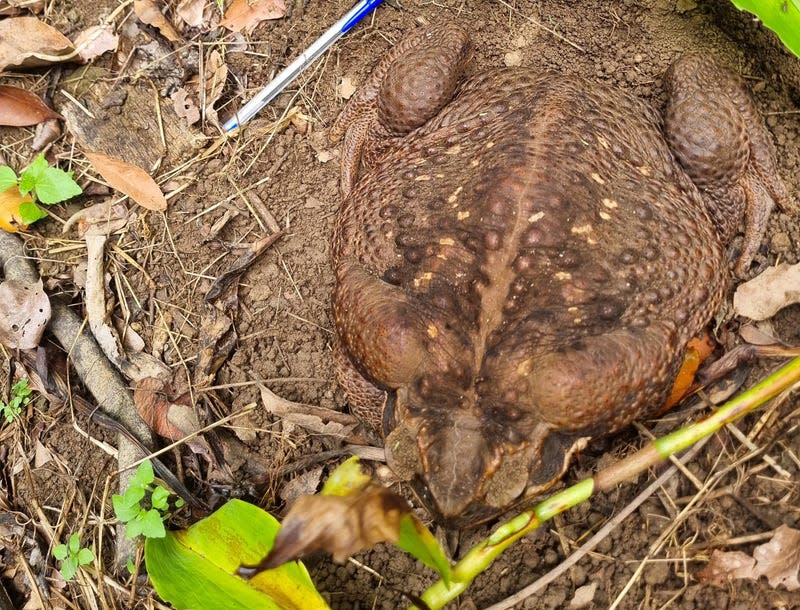
Though Toadzilla wasn’t long for this world post-discovery, the huge hopper is set to live on at the Queensland Museum. The institution was “interested in taking her, as she might be the largest on record.” There, she will presumably get a second life as an educational resource.
More from Gizmodo
Sign up for Gizmodo's Newsletter. For the latest news, Facebook, Twitter and Instagram.

